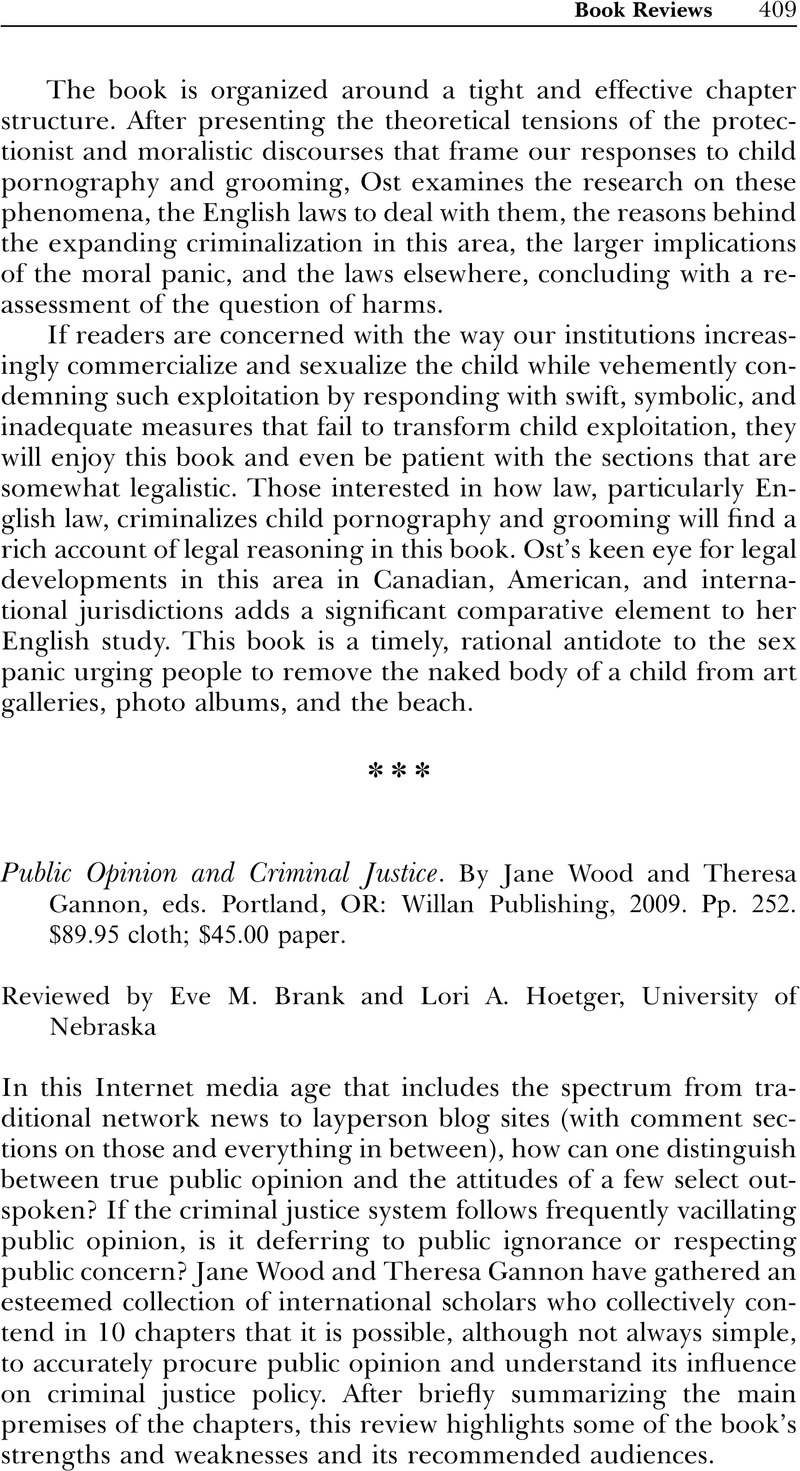No CrossRef data available.
Article contents
Public Opinion and Criminal Justice. By Jane Wood and Theresa Gannon, eds. Portland, OR: Willan Publishing, 2009. Pp. 252. $89.95 cloth; $45.00 paper.
Review products
Public Opinion and Criminal Justice. By Jane Wood and Theresa Gannon, eds. Portland, OR: Willan Publishing, 2009. Pp. 252. $89.95 cloth; $45.00 paper.
Published online by Cambridge University Press: 01 January 2024
Abstract
An abstract is not available for this content so a preview has been provided. Please use the Get access link above for information on how to access this content.

Information
- Type
- Book Reviews
- Information
- Copyright
- © 2010 Law and Society Association.
References
Robinson, Paul H., & Darley, John M. (1995) Justice, Liability and Blame: Community Views and the Criminal Law. Boulder, CO: Westview Press.Google Scholar

